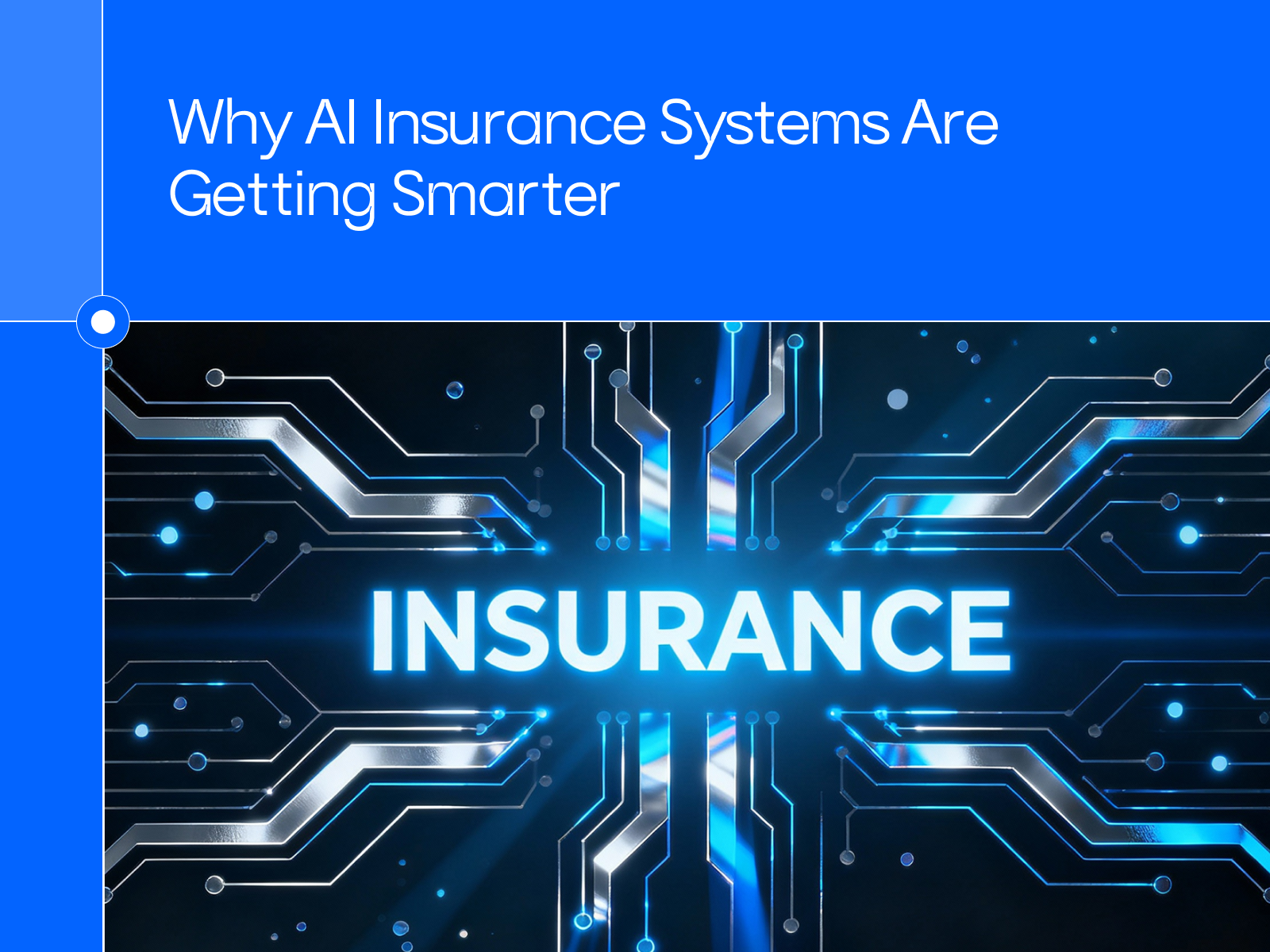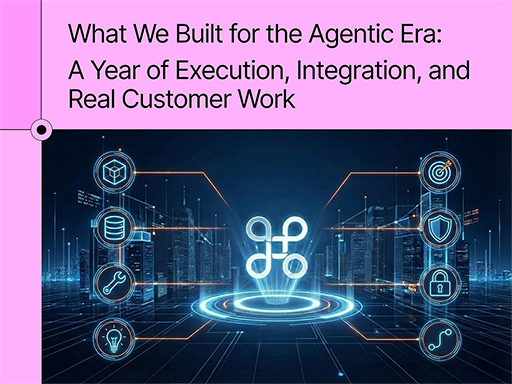Agentic AI is reshaping insurance—from underwriting to claims—by turning automation into intelligent, proactive, and trustworthy systems.



Artificial intelligence (AI) in insurance has moved beyond automation. What began as rule-based efficiency tooling is maturing into agentic systems—intelligent architectures that can perceive, reason, act, and learn across connected platforms. Insurers adopting these models are reporting improvements across underwriting, claims, fraud, and customer experience—not by adding more tools, but by rewiring how work gets done and how trust is measured over time. Leading analyses from firms like McKinsey and BCG point to the same pattern: the advantage comes from a comprehensive, enterprise approach rather than isolated pilots.
From Automation to Autonomy
Traditional automation executed predefined steps. Agentic AI shifts to goal-directed behavior: agents interpret context, plan, and invoke actions via Application Programming Interfaces (APIs) to complete end-to-end tasks—then learn from outcomes. In underwriting, that can mean reconciling and validating data from multiple sources before an underwriter’s final judgment. In claims, it can orchestrate document intake, telematics, third-party data, and payments in near real time.
Independent research underscores the gap between experimenting and scaling: only a small share of carriers have fully scaled AI practices enterprise-wide; most remain in pilots. The implication is clear—results correlate with a programmatic, cross-functional approach (data, tech, talent, governance) rather than point solutions.
From Reactive to Proactive Risk Management
Insurance has historically been reactive—assessing losses post-event. With predictive analytics and continuous anomaly detection, modern systems shift toward risk anticipation and prevention. Fraud is a vivid example: models analyze text, network relationships, and signals across channels to flag suspicious patterns earlier, while keeping human review in the loop. Responsible design matters—overly aggressive thresholds can erode customer trust, so calibration and explainability are operational requirements, not afterthoughts. McKinsey’s work highlights how combining model performance with scaled operating changes (data pipelines, decision rights, talent) separates leaders from laggards.
Understanding Agentic AI and the PRAL Loop
Agentic systems typically follow PRAL—Perceive, Reason, Act, Learn:
- Perceive: Aggregate/interpret structured policy data, unstructured documents, images, telematics, and IoT (Internet of Things) feeds.
- Reason: Formulate plans consistent with business objectives and constraints (pricing guardrails, compliance rules).
- Act: Execute across systems through APIs and orchestration layers.
- Learn: Incorporate feedback (outcomes, exceptions, customer inputs) to improve the next cycle.
This loop is what differentiates agentic AI from single-shot, prompt/response models: it closes the loop operationally. McKinsey’s guidance on gen-AI operating models emphasizes that value emerges when learning loops are embedded into processes, not just into models.
Where Impact Shows Up Across the Value Chain
Underwriting and Risk Assessment
AI assists with document understanding, data prefill, and dynamic exposure modeling. The effect is less time spent on repetitive research and more on complex judgment calls. McKinsey reports that the insurers seeing outsize value treat gen-AI and decisioning as an enterprise capability—data pipelines, tooling, and governance—rather than discrete pilots.
Claims and First Notice of Loss (FNOL)
Automated intake and orchestration speed up cycle times and reduce manual handling. J.D. Power trend data shows cycle time is a central driver of claimant sentiment; long cycles depress satisfaction, so any technology that removes friction in FNOL through resolution can materially move the needle.
Customer Engagement
Conversational systems—chat, voice, and messaging—are reducing wait times and offering status clarity while handing off complex or sensitive cases to people. Deloitte’s insurance analyses and case examples emphasize pairing automation with empathy and escalation paths to avoid degrading the experience.
Fraud Detection and Prevention
Multimodal and graph-based techniques can surface organized fraud patterns earlier, enabling targeted SIU (Special Investigations Unit) work and fewer false negatives—provided models remain explainable and auditable.
Climate Risk and ESG (Environmental, Social, and Governance)
As climate volatility rises, carriers are adopting AI to assess exposure, stress-test portfolios, and streamline ESG disclosures. The same governance patterns—data lineage, model monitoring, and transparent reporting—apply here as well. (See Deloitte and McKinsey coverage on scaling operating models and risk.)
Implementation Hurdles—and How Leaders Get Past Them
- Legacy integration: Connecting modern models to decades-old cores remains the heaviest lift; leaders use secure API layers and event-driven patterns to stage modernization over time while still shipping value. McKinsey’s work stresses “rewiring the enterprise” (operating model, tech architecture, data) as the lever for durable impact.
- Regulatory transparency: The National Association of Insurance Commissioners (NAIC) adopted a model bulletin on the Use of Artificial Intelligence Systems by Insurers, setting expectations for governance, documentation, testing, and fairness. Many states have begun adopting or adapting it—check your state’s status map and bulletin text.
- Data quality and governance: Many failures stem from fragmented, biased, or poorly governed data rather than from model choice. Leaders invest in lineage, access controls, drift monitoring, and human-in-the-loop review—especially for high-stakes decisions.
- Scaling beyond pilots: BCG’s research shows most carriers are still in pilot mode; only a small minority have scaled AI capabilities across the enterprise, which is where the real economic upside begins.
Action Exercise: Assess Your AI Readiness Loop
To help translate these insights into practice, leaders can use a short PRAL Readiness Check—a five-minute team exercise that identifies where modernization is most needed.
How to use it:
- Have leaders from operations, data, and compliance each rate their confidence in each row (1–5).
- Compare results; gaps over two points signal immediate priorities.
- Re-run quarterly to track progress as systems and governance evolve.
Closing Reflections: When Intelligence Compounds
Real advantage comes from reliable loops, not just additional features. Every time an agent perceives, reasons, acts, and learns with transparency, confidence grows—for customers, regulators, and teams. That trust compounds faster than feature count. The carriers that win won’t simply “add AI”—they’ll operationalize learning across underwriting, claims, fraud, and service with the governance to match.
Browse Similar Articles
Accelerate Your Agent Roadmap
Adopt gives you the complete infrastructure layer to build, test, deploy and monitor your app’s agents — all in one platform.




.svg)
.svg)





.svg)

.svg)
